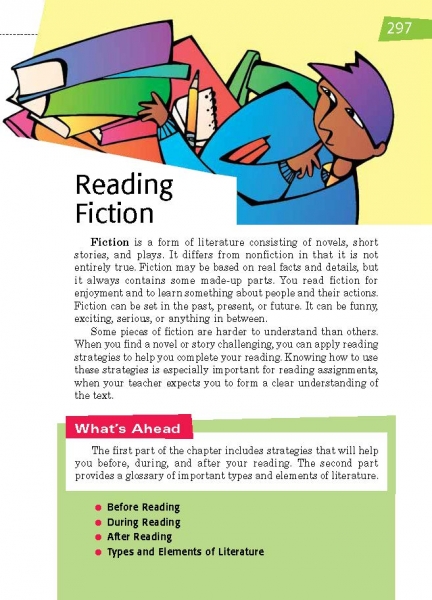Page 297 from

Start-Up Activity
Ask for a volunteer to read this page out loud. Pay special attention to the two main reasons people read: (1) for enjoyment and (2) to learn something about people. Explain to students that human beings seem hardwired to enjoy stories. We like to hear them, watch them, and read them. In fact, we like a good story more than just about anything else. We also learn from stories, in that we see how the characters act in different situations. Then we judge if they acted properly and if we would have acted in the same way.
Share with students a few of your favorite novels and movies and explain why you like them. Next, ask your students to share a few favorites of their own. Consider examining one of your favorite book lists for adolescents to help students choose their next book and/or have your librarian discuss new titles in the library.
Think About It
“Read as much as you possibly can—reading is an essential occupation for any would-be writer.”
—Joan Aiken

Start-Up Activity
Ask for a volunteer to read this page out loud. Pay special attention to the two main reasons people read: (1) for enjoyment and (2) to learn something about people. Explain to students that human beings seem hardwired to enjoy stories. We like to hear them, watch them, and read them. In fact, we like a good story more than just about anything else. We also learn from stories, in that we see how the characters act in different situations. Then we judge if they acted properly and if we would have acted in the same way.
Share with students a few of your favorite novels and movies and explain why you like them. Next, ask your students to share a few favorites of their own. Consider examining one of your favorite book lists for adolescents to help students choose their next book and/or have your librarian discuss new titles in the library.
Think About It
“Read as much as you possibly can—reading is an essential occupation for any would-be writer.”
—Joan Aiken
